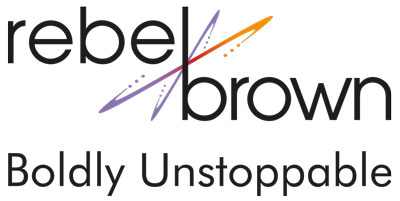Integrated media is one of the hot new buzzwords in everything from marketing websites to sales presentations to customer engagement. There’s no doubt that media is changing the face of communications in B2B and B2C markets alike. That’s a great thing for our buyers and vendors alike. Why? Because our human brains grasp and remember visual information much better than we do textual content. How do we best take advantage of this Big Change? I chatted with Paul Biederman, design expert and social media friend about his take on visual and our content strategies.
Paul shares his expertise in his interview and in the Slideshare he prepared to add even more value to his comments.
1) Research has proven that people remember far more from images than words. How does that play into today’s media-focused marketing?
If you look across the web and especially on the social platforms, you will see that people love sharing pictures and meme-style images! More and more, the platforms are catering to this and the way people like to engage. Platforms such as Pinterest and Instagram are built around visuals, but Facebook, Twitter, Google+ and even LinkedIn are also becoming increasingly more visual! It would be wise for companies to pay attention to this and develop a visual content strategy that capitalizes on it.
2) If a picture tells a thousand words — how does that impact storytelling today?
Telling your brand story, whether you are a company or an independent professional, is key to capturing the hearts and minds of your market, your audience and your online communities. It is a busy, distracted world and people are spending less and less time reading lengthy explanations — they’d rather skim. So if you want to tell your story with impact, you better be using strong visuals! Videos play a part too, of course, but I still think that still visuals together with a powerful, well-designed brand work even better in this world where no one seems to have any time to spare anymore. Videos take time — pictures are a quick grab and there is endless power in a story told through a strong, consistent brand image that is pervasive through all communications and media touchpoints.
3) What is the biggest misconception about design you encounter in the business world?
I still come across people who seem to think that design is merely a decorative add-on or unnecessary fluff. Nothing could be further from the truth — in fact, I would say that design is the critical component missing from many businesses. Good design is that which serves a business purpose. It clarifies, communicates, unifies, engages and influences to name a few examples. Of course, doing these things well improves the bottom line, but good designers also save money by streamlining communications and processes, as well as preventing unnecessary waste. This is why design should also be considered at the very earliest stages of a project and by the highest levels. From a well-designed brand strategy that communicates clearly and succinctly everything that a business is about to a cohesive marketing program that powerfully accomplishes its business objectives to visual content that helps a business stand out and stimulate engagement on the social web — good design and a strong visual strategy have never been more important.
4) What are the greatest challenges companies need to overcome in order to adopt successful creative strategies that achieve their business goals?
Too many times, a potentially sound business strategy isn’t supported by an equally good creative strategy, allowing the plan to die on the vine. And if a business recognizes how critical the role of good design is to execute the strategy and enable its success, the budget dollars need to be placed there as well, not relegated to another day as something “nice to have” once other expenditures are made.
5) We all know buyers are distracted and overwhelmed with too much information and too many interruptions. How can we use visuals to rise above the noise?
Well-designed communications in this day and age need to get to the meat of the message really quickly. Messaging must be distilled down into “sound-bytes” that even skimmers will catch the meaning of. Visuals transport those messages and drive them through the noise out so they stand apart from the busy streams, enabling the messages to be seen. It amazes me how few companies seem to understand this and do it well — but that presents amazing opportunities for the smart companies that “get it.”
6) What’s the best balance between content and visuals in today’s world?
Visuals are also content, but if you mean text, less is more. Just as the most nicely crafted ads have always achieved a fine balance and interplay between text and visual, the same holds true now. Since we are increasingly becoming a visually-oriented society as things constantly zip by us in today’s media from all directions, coming up with strategies that allow the visual to dominate would be prudent. Once someone is hooked, they can then be directed somewhere else where the broader story can be told — but they need to be hooked first.
7) What do you think are the perfect elements of an engaging story?
I like to keep it simple, since again, a complex story will only cause befuddlement and people will move on. At best, you want your single main message to get across. I encourage people not to rush this part of the process — it means introspection and not settling on the obvious. Everyone else is doing the obvious — you or your company needs to set itself apart. A simple example: If you’re a dry cleaner, do you only clean clothes or do you keep people looking great so they can go out into the world and be the best they can be? Or perhaps, a dry cleaner simply makes people’s lives easier, giving them more time to do the things they love. Or maybe they use safe chemicals for a better, healthier, greener environment. Those are all better stories than just cleaning clothes. Marry a simple, compelling story to a strong visual campaign and you’re golden!
_____








1 Comment
Pain relief diapers for dogs in heat
April 30, 2014 - 6:49 amGreat post. I was checking constantly this blog and I am impressed!
Very helpful information specifically the last part 🙂 I care for such
information much. I was looking for this particular info
for a very long time. Thank you and best of luck.